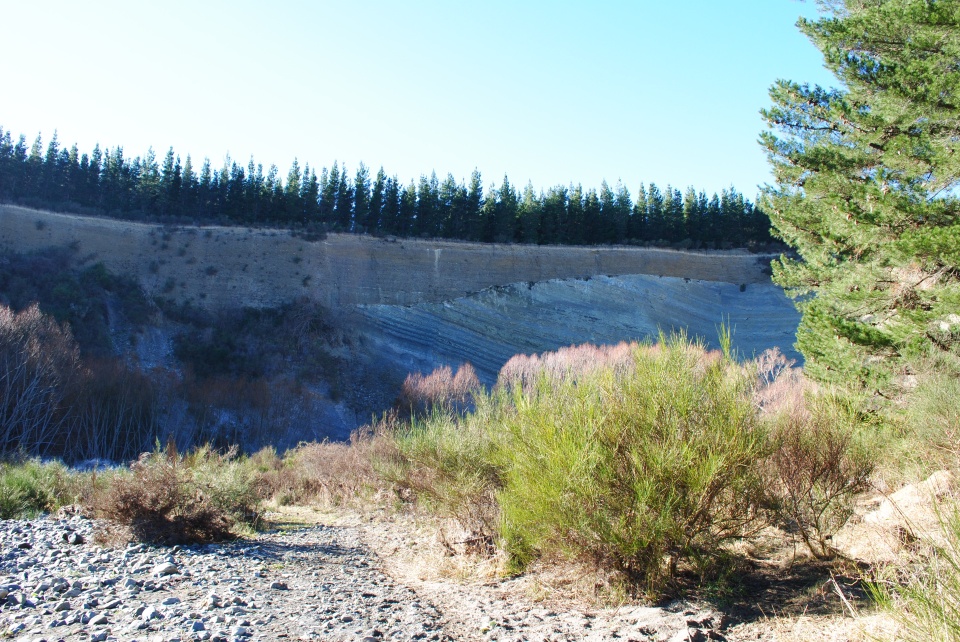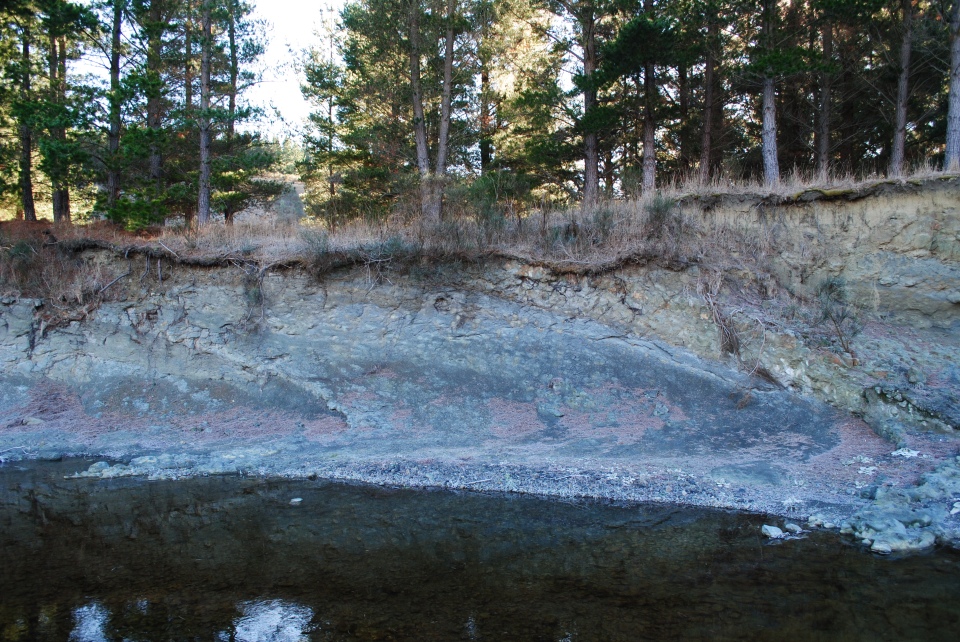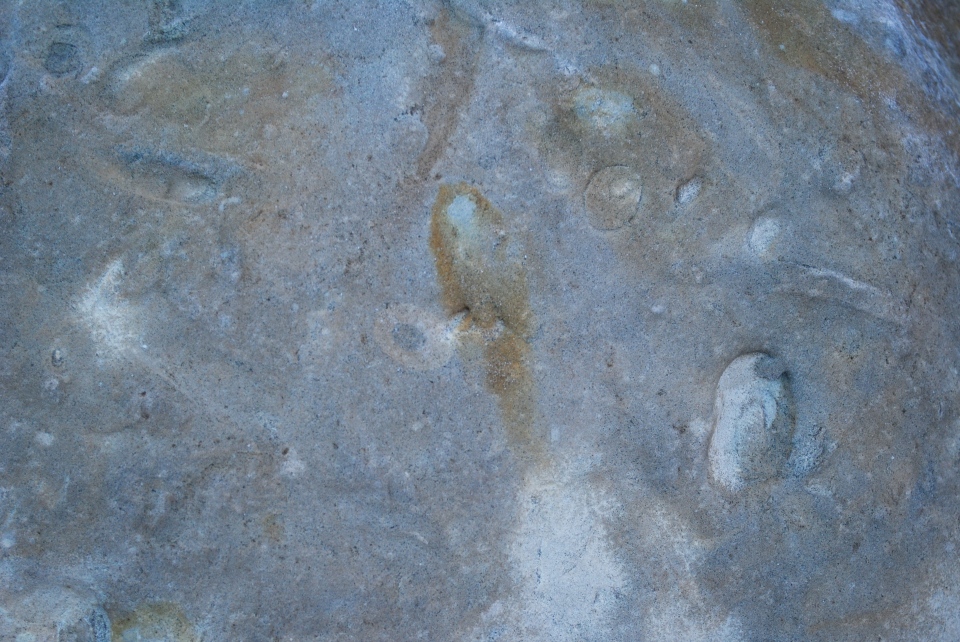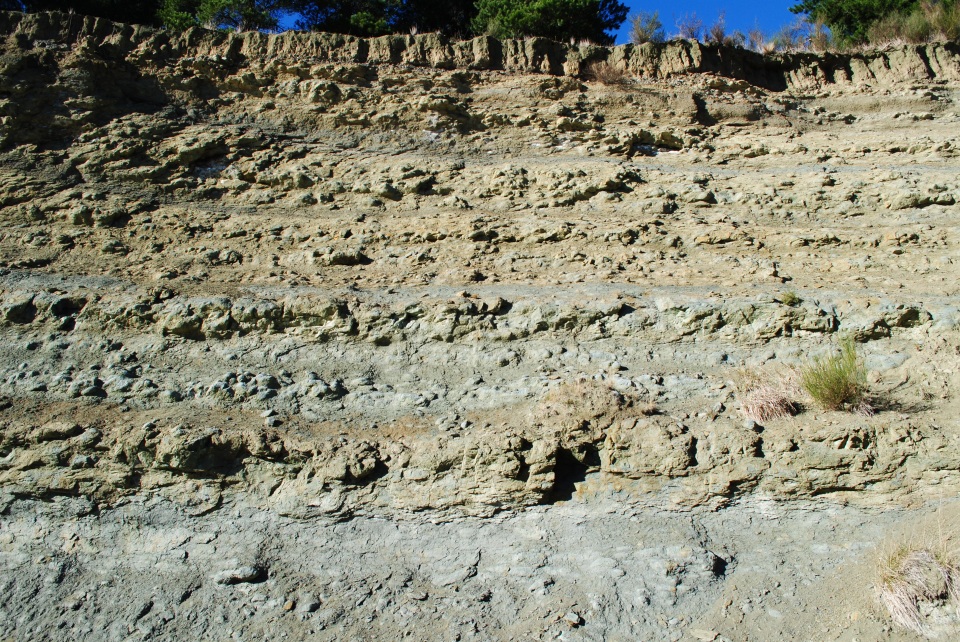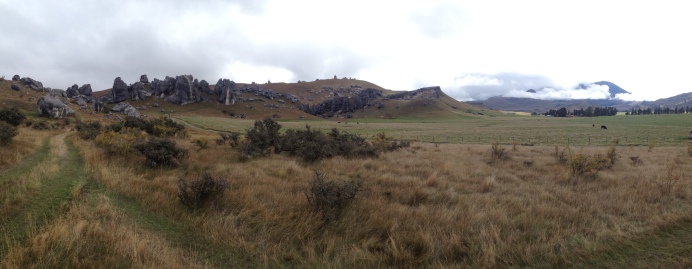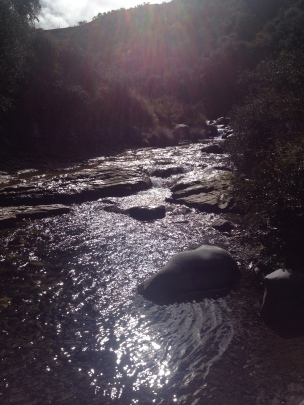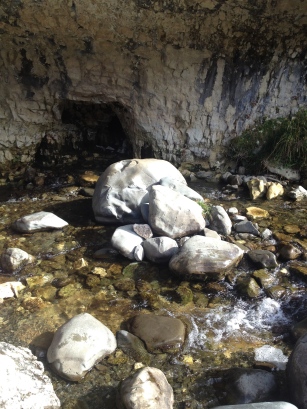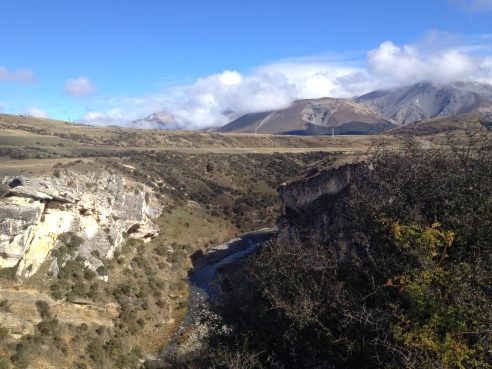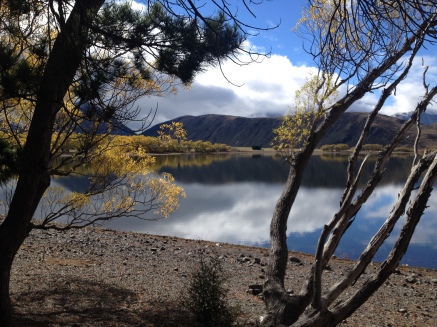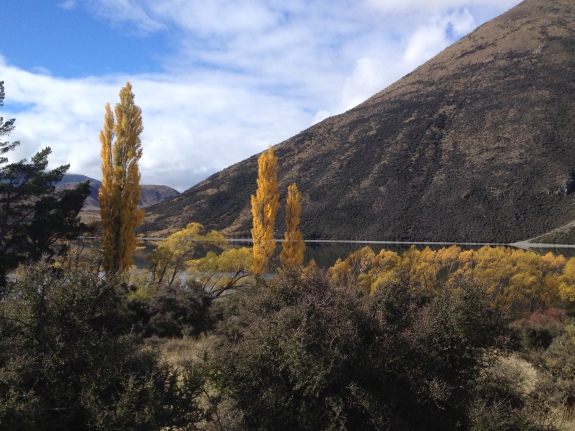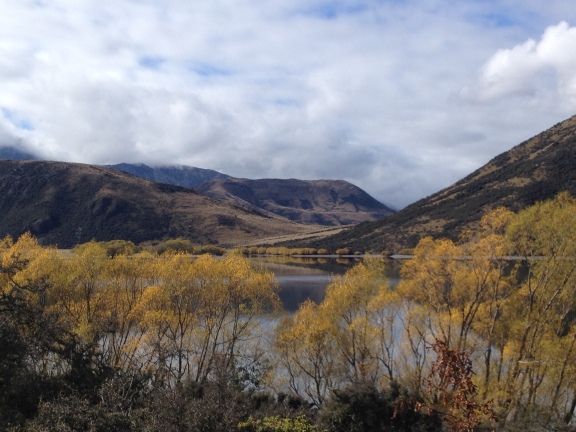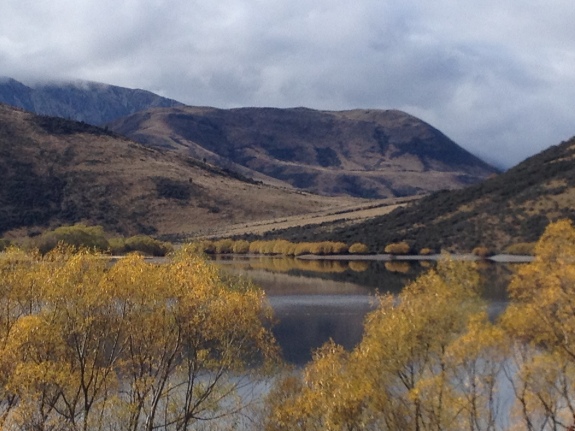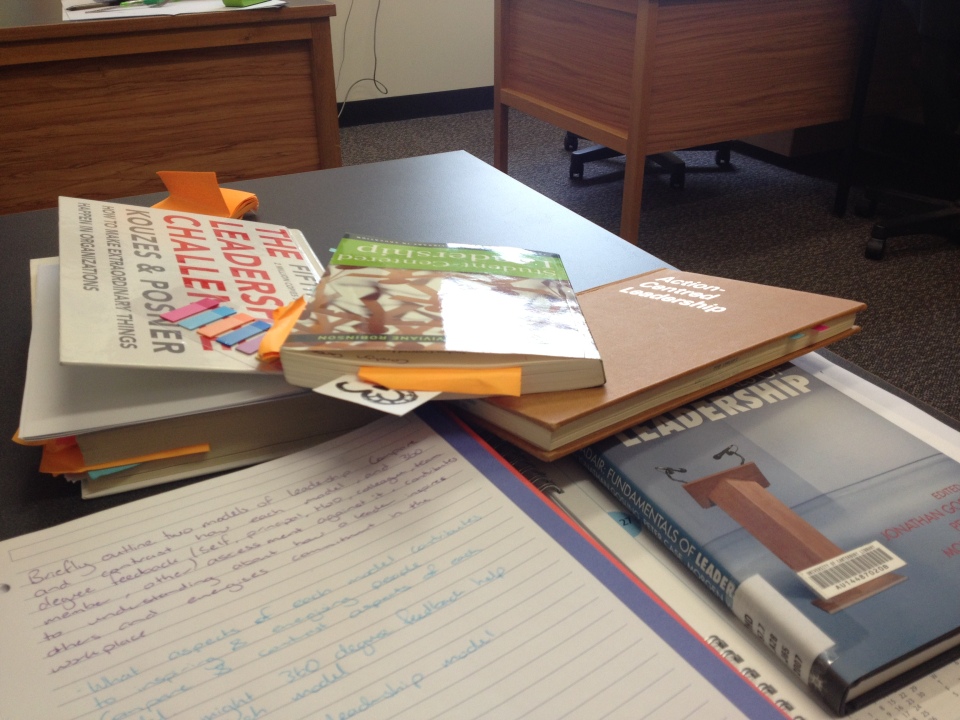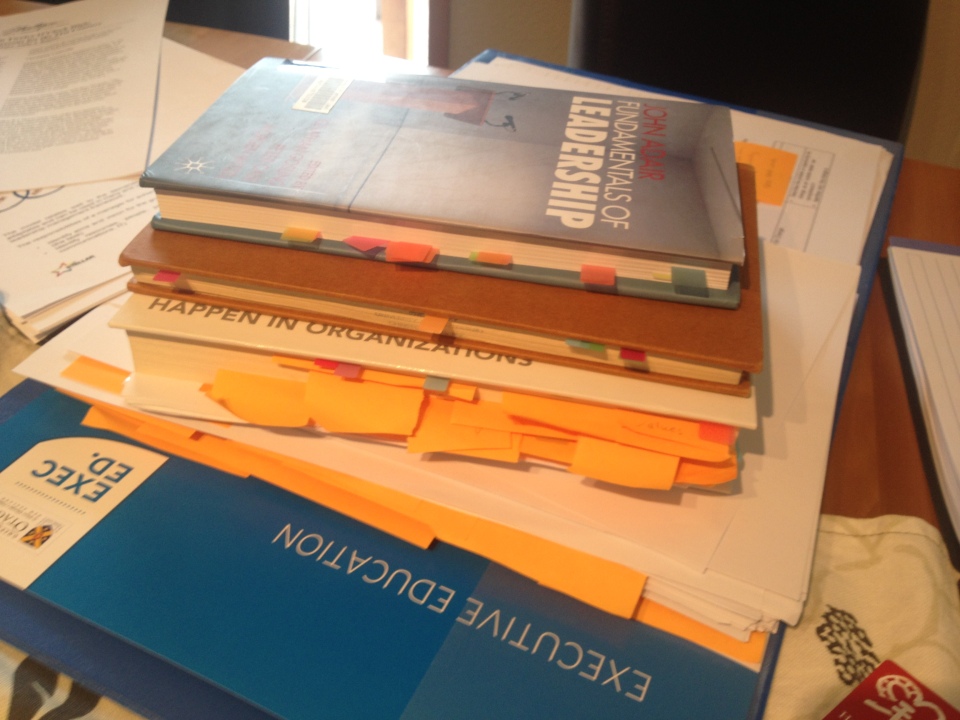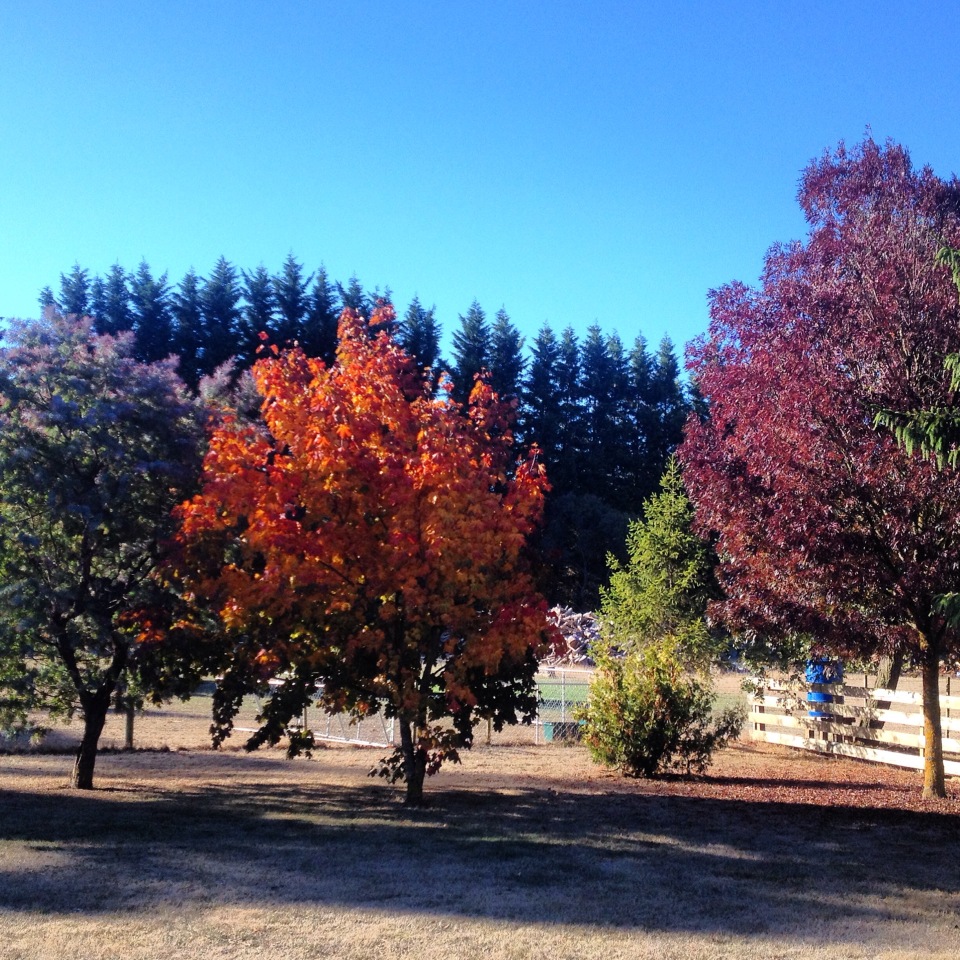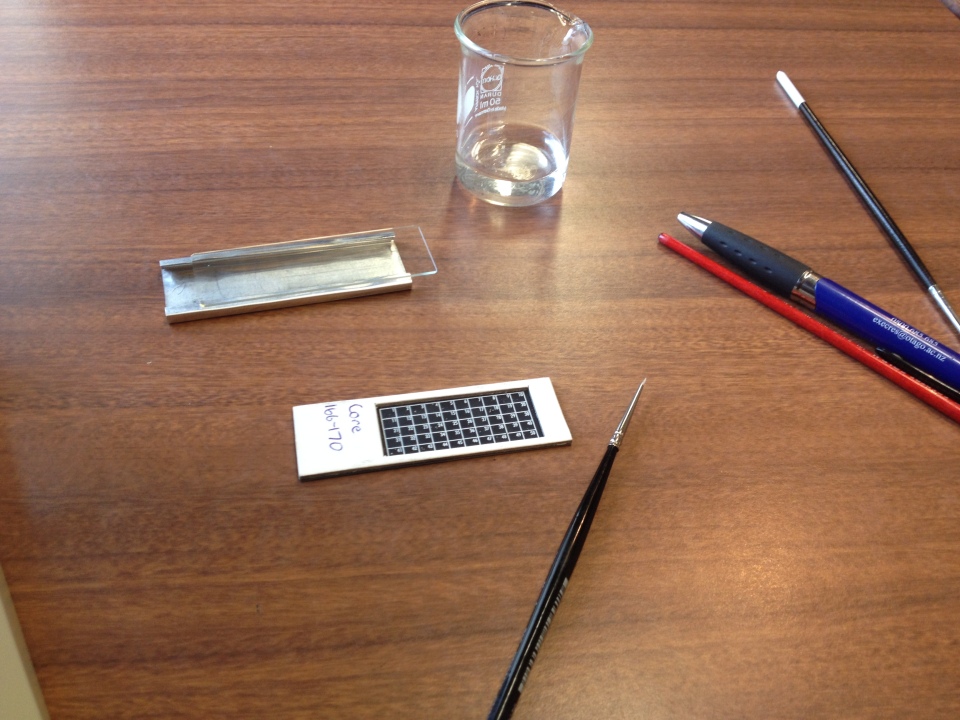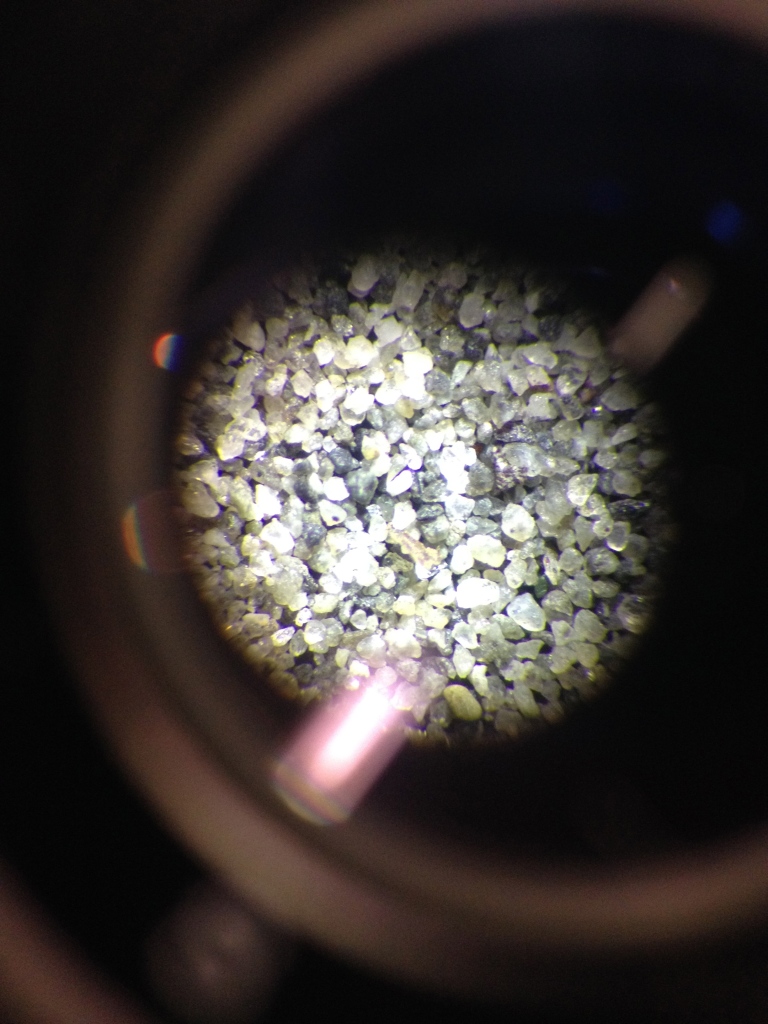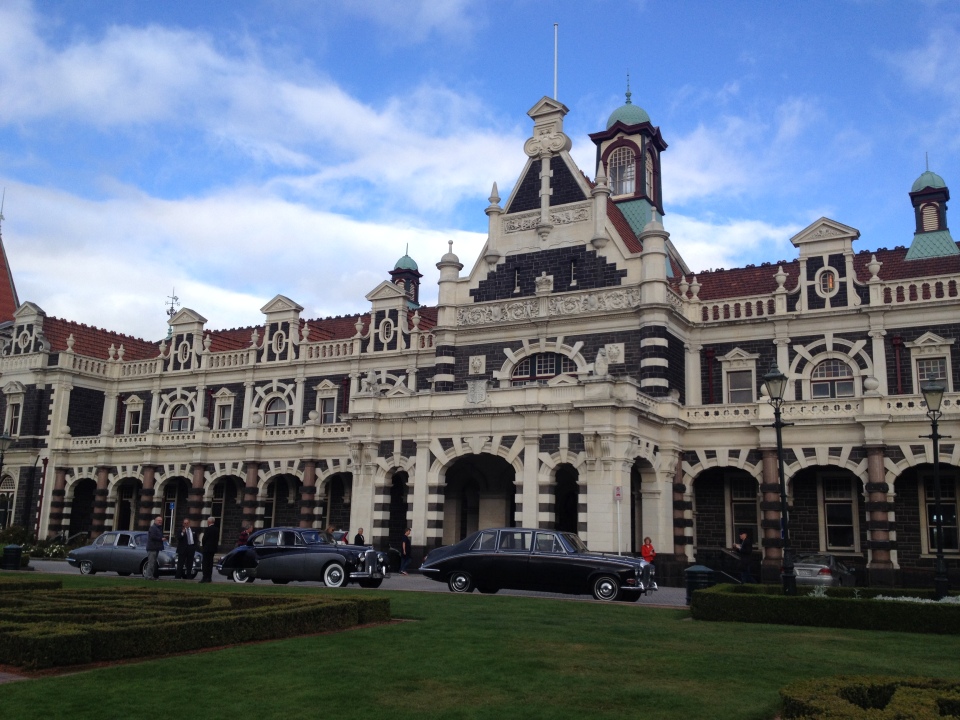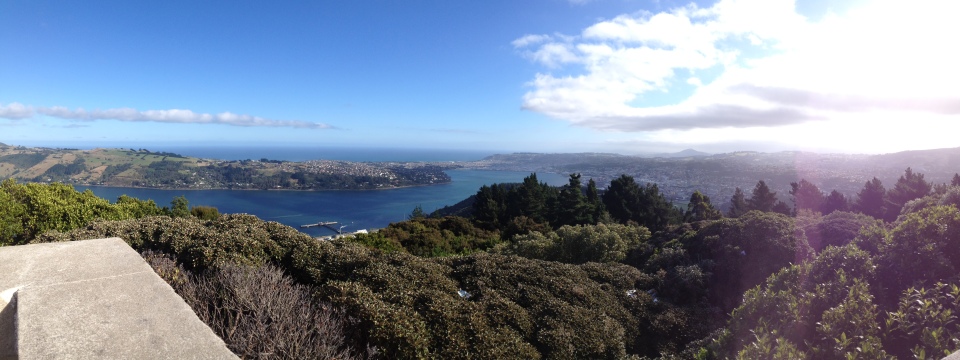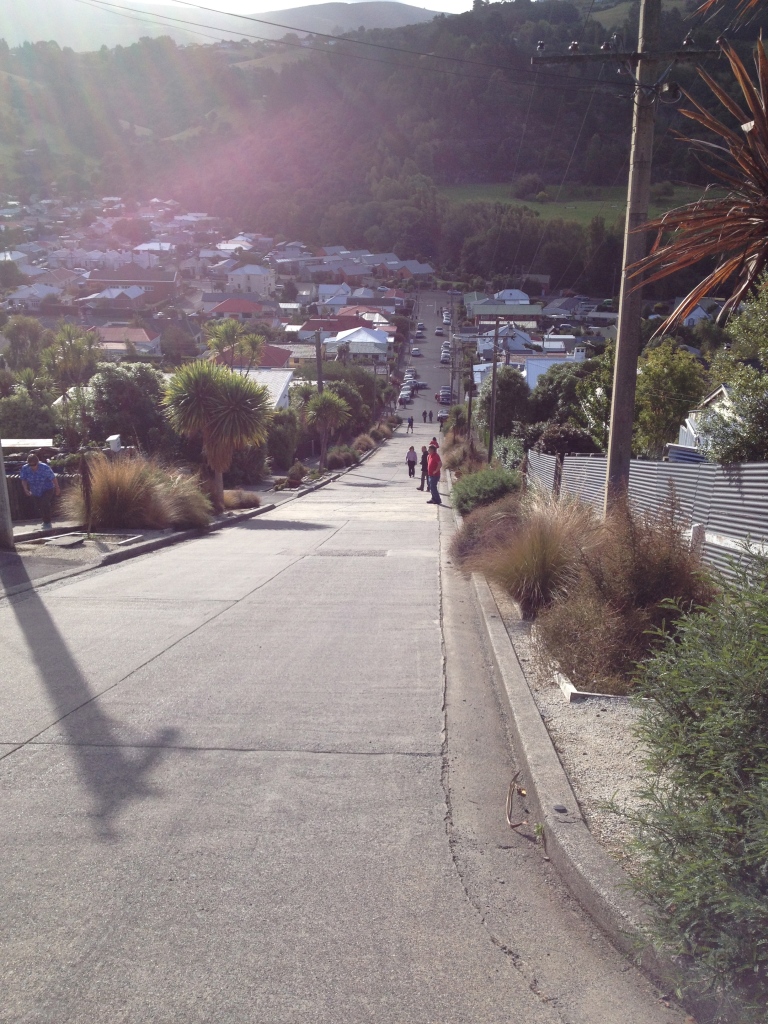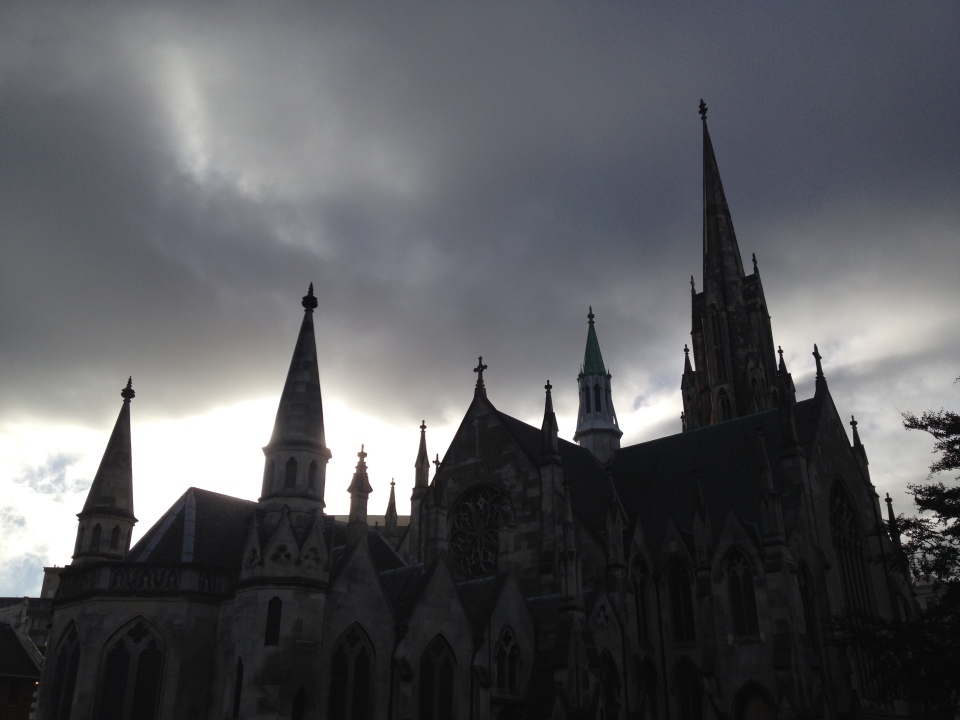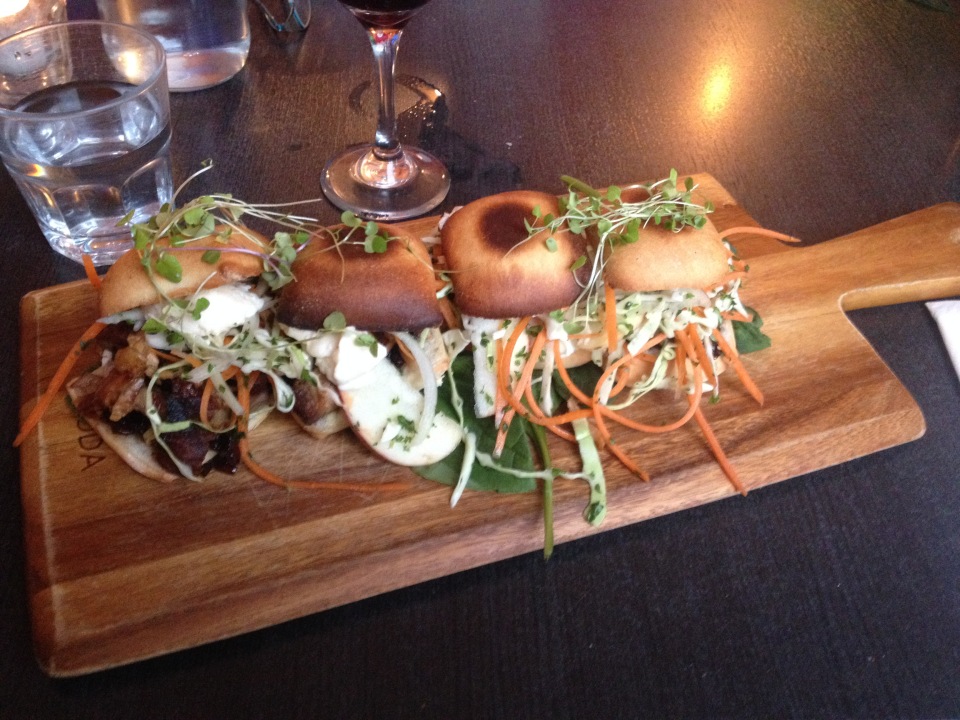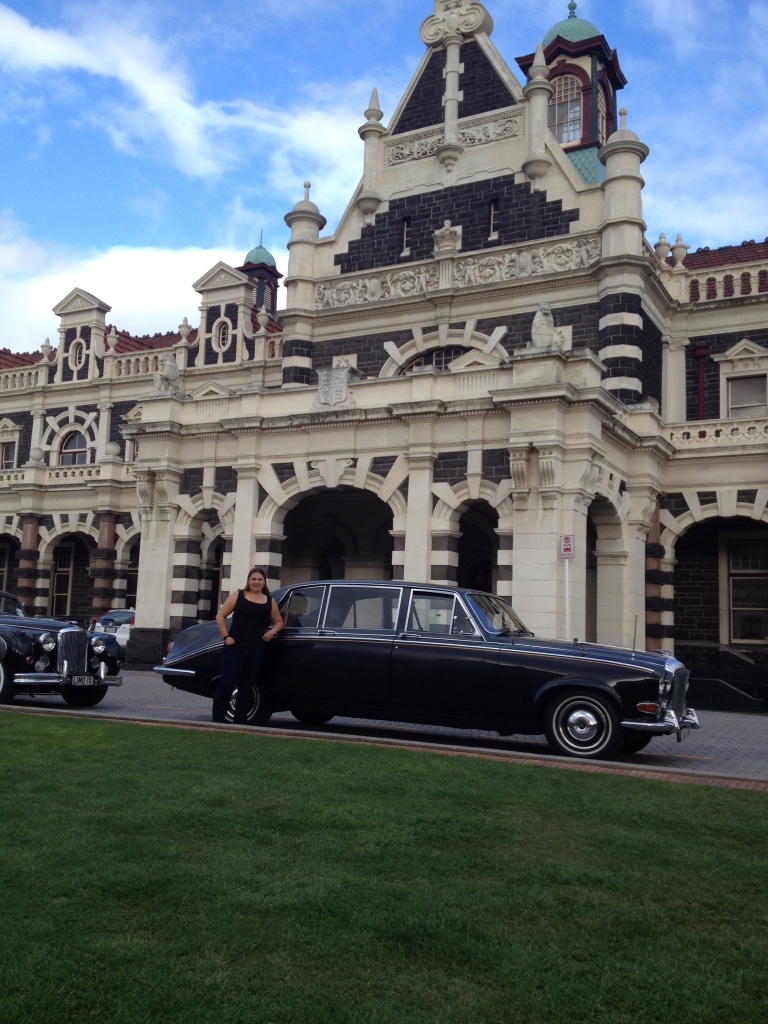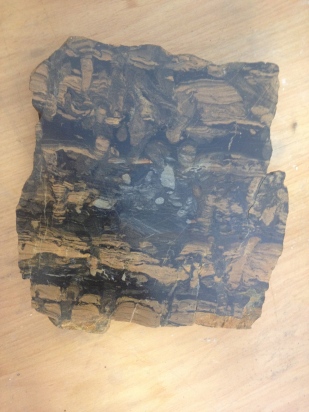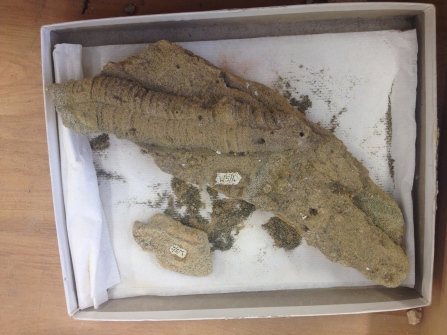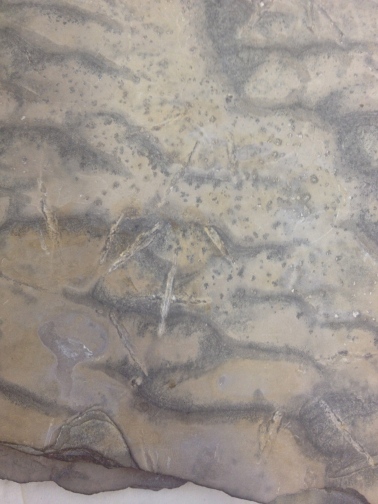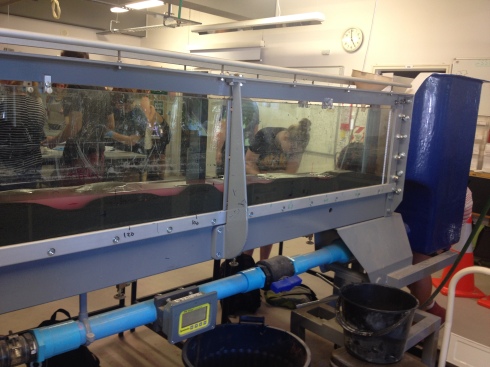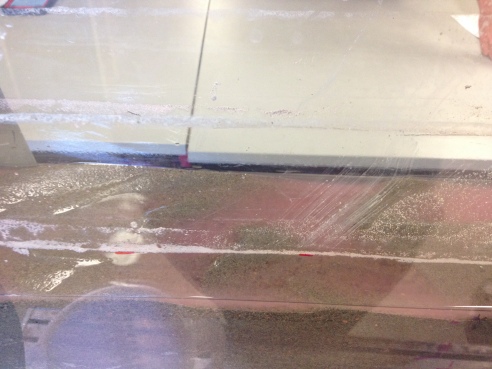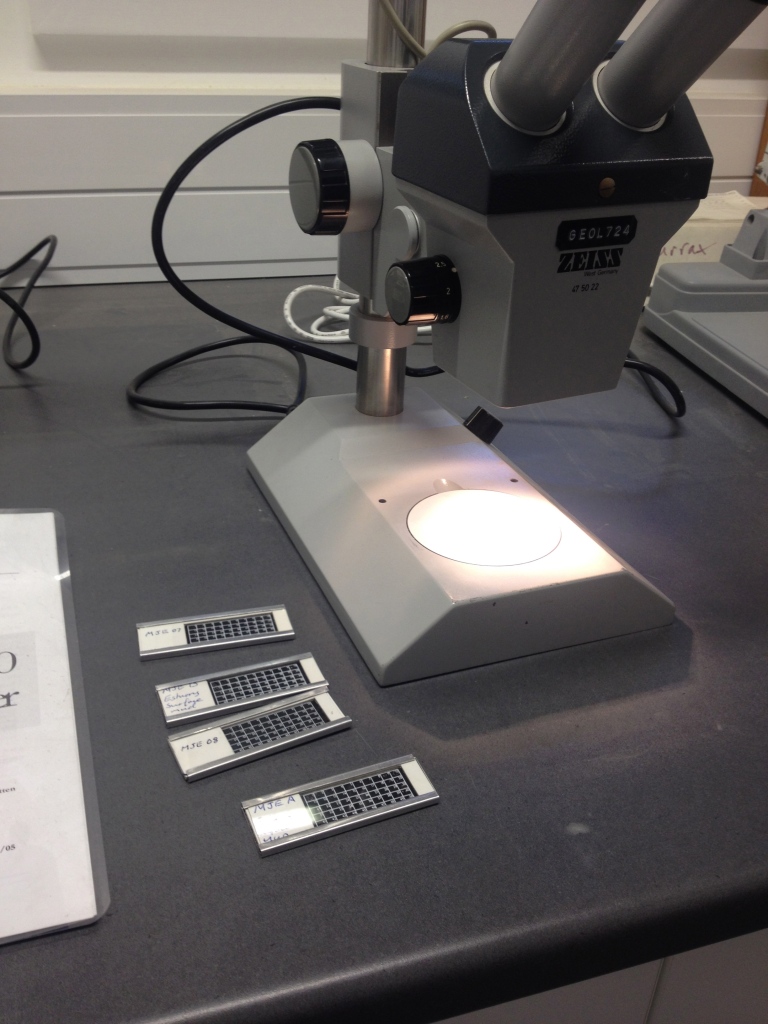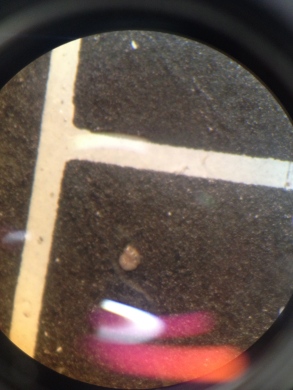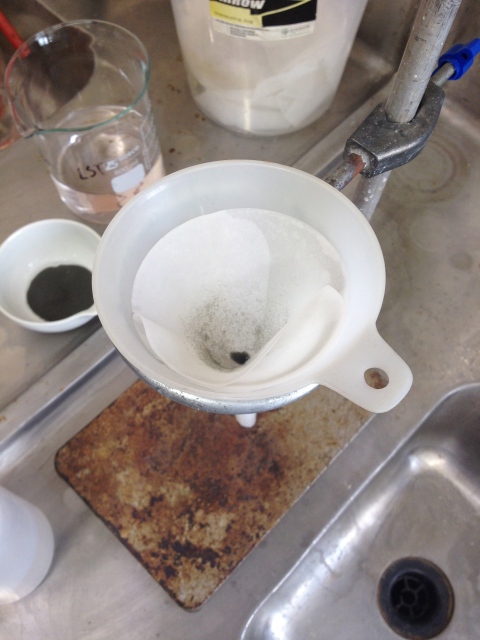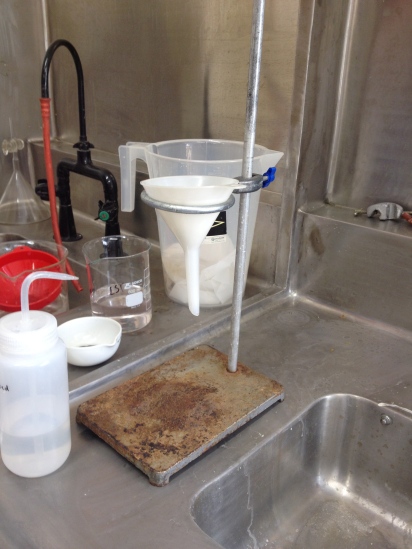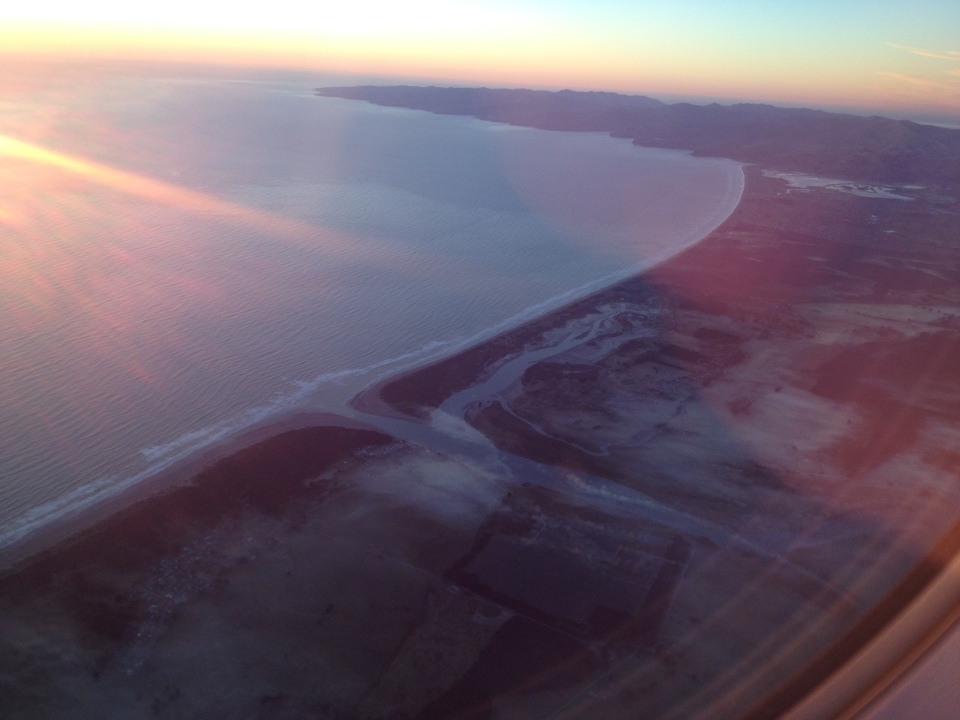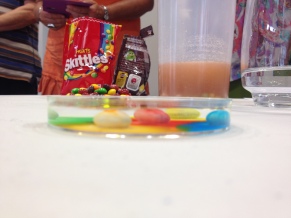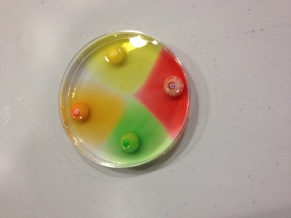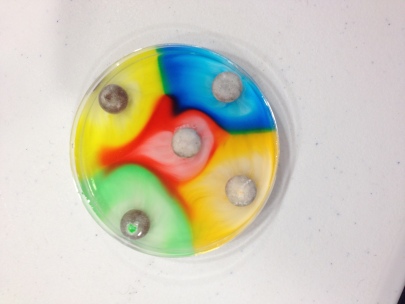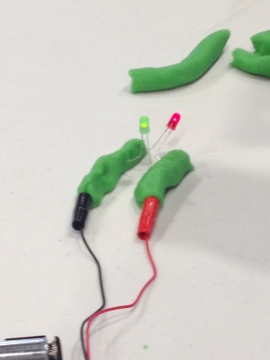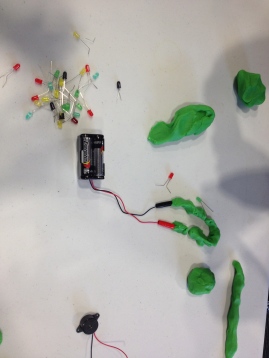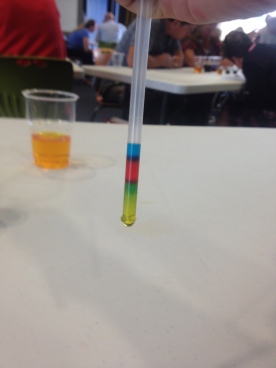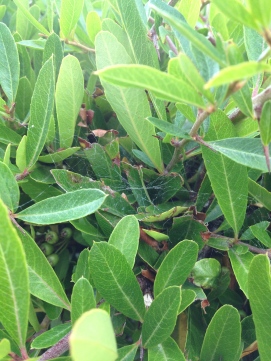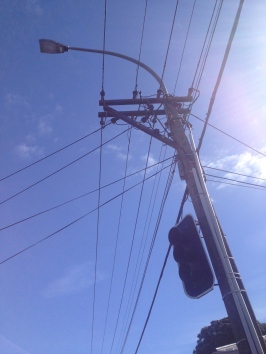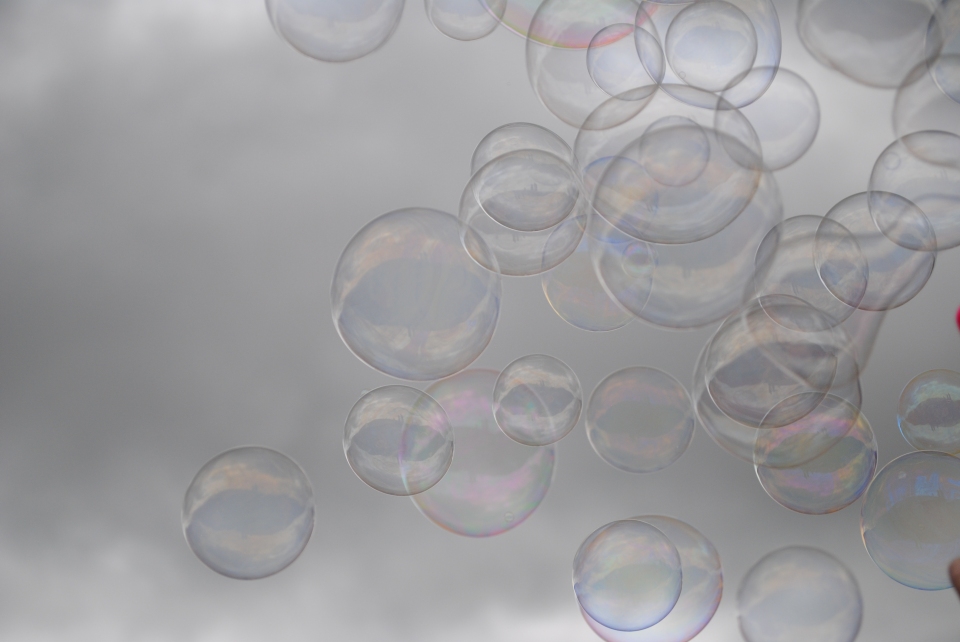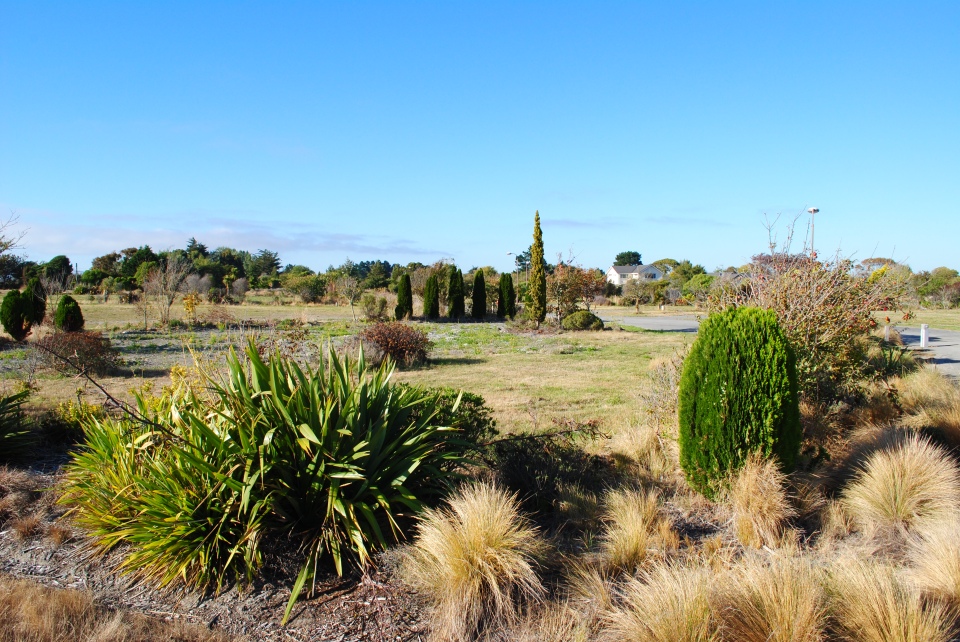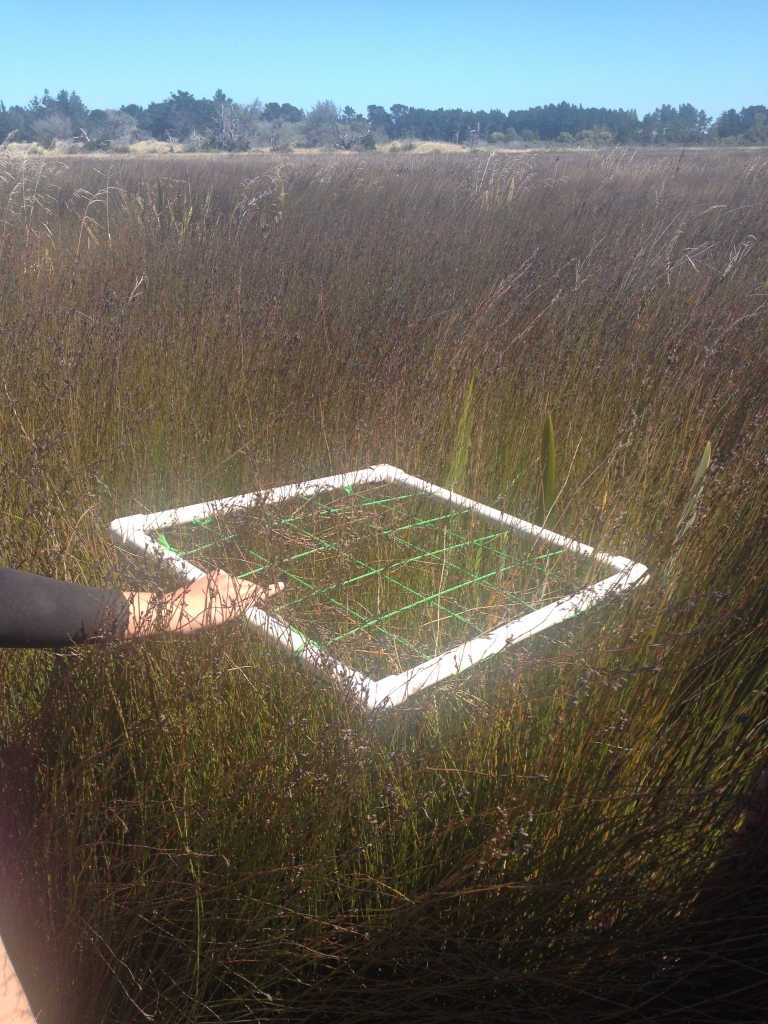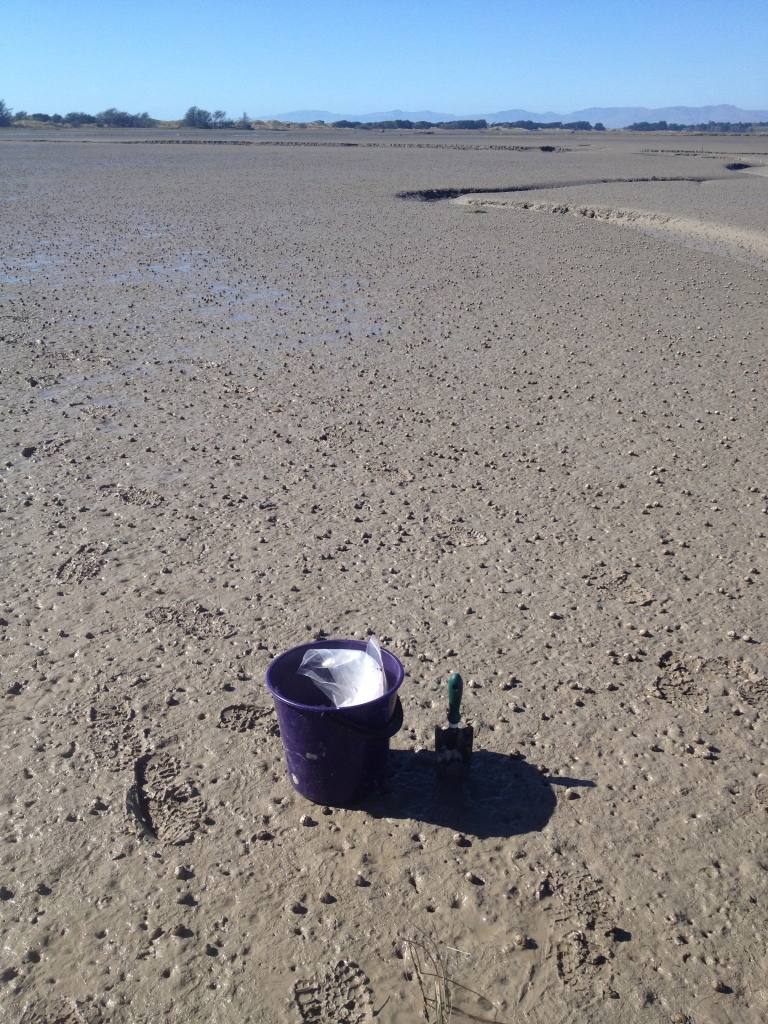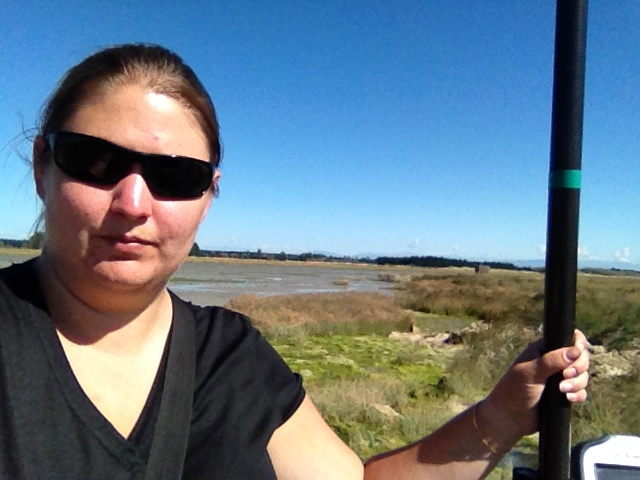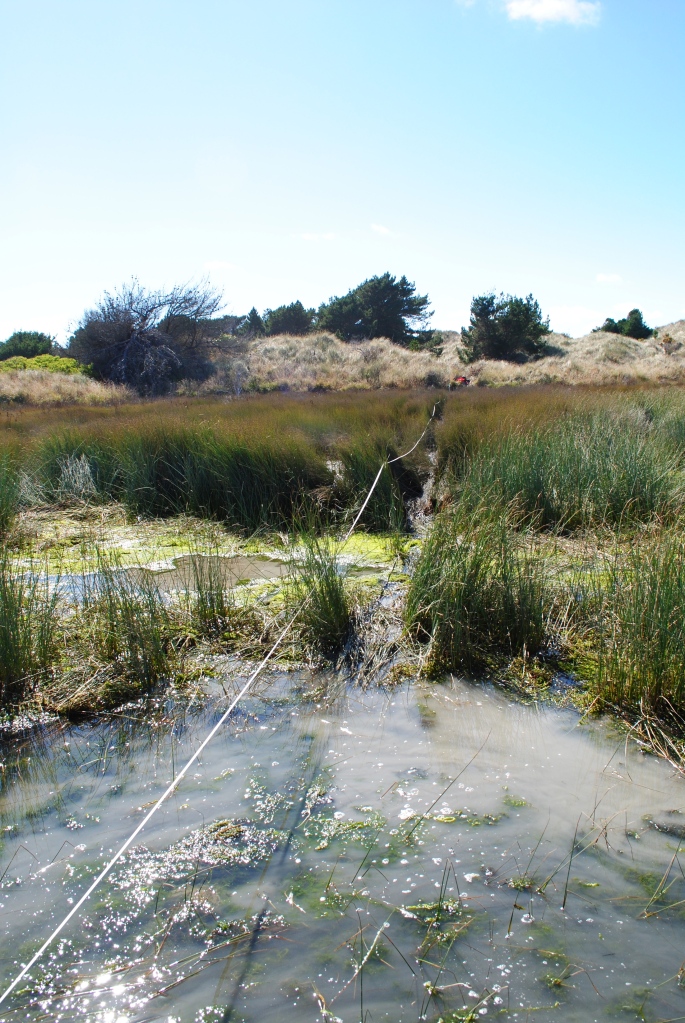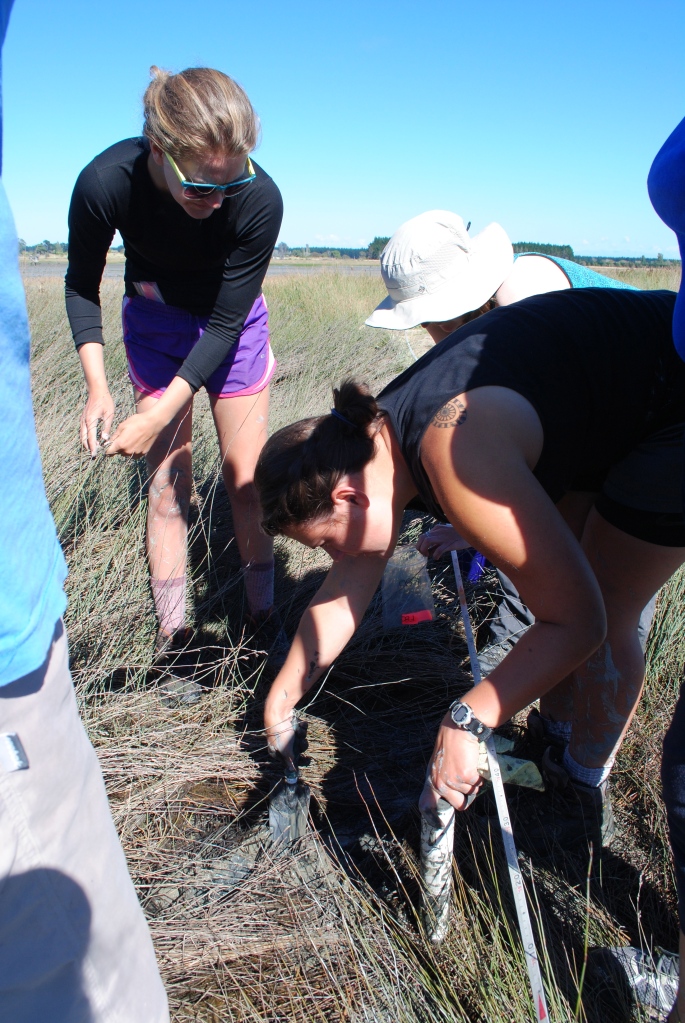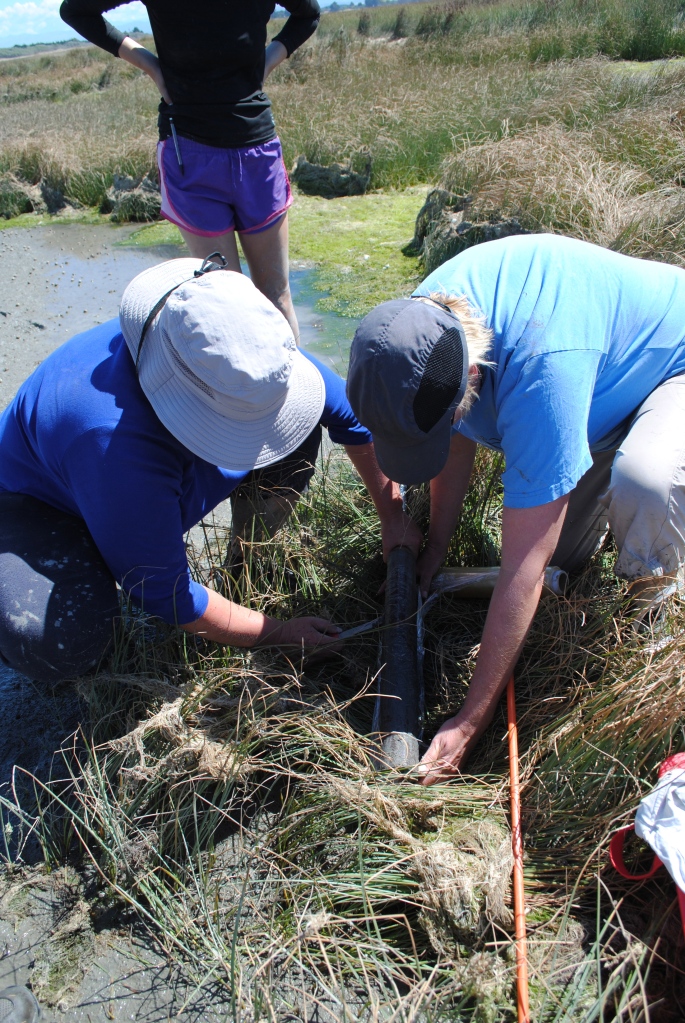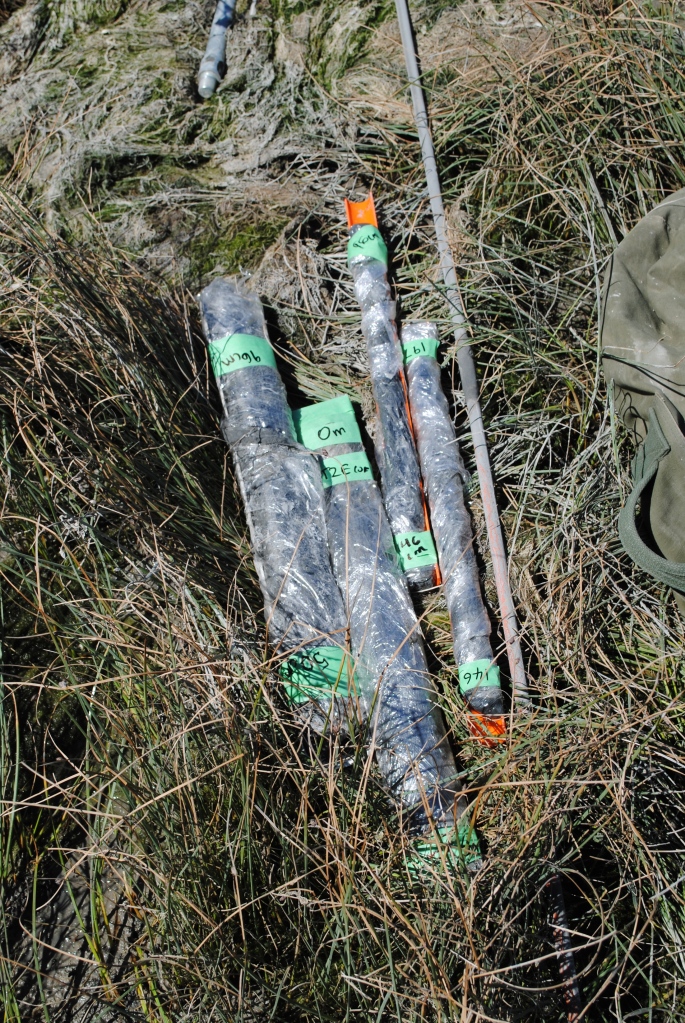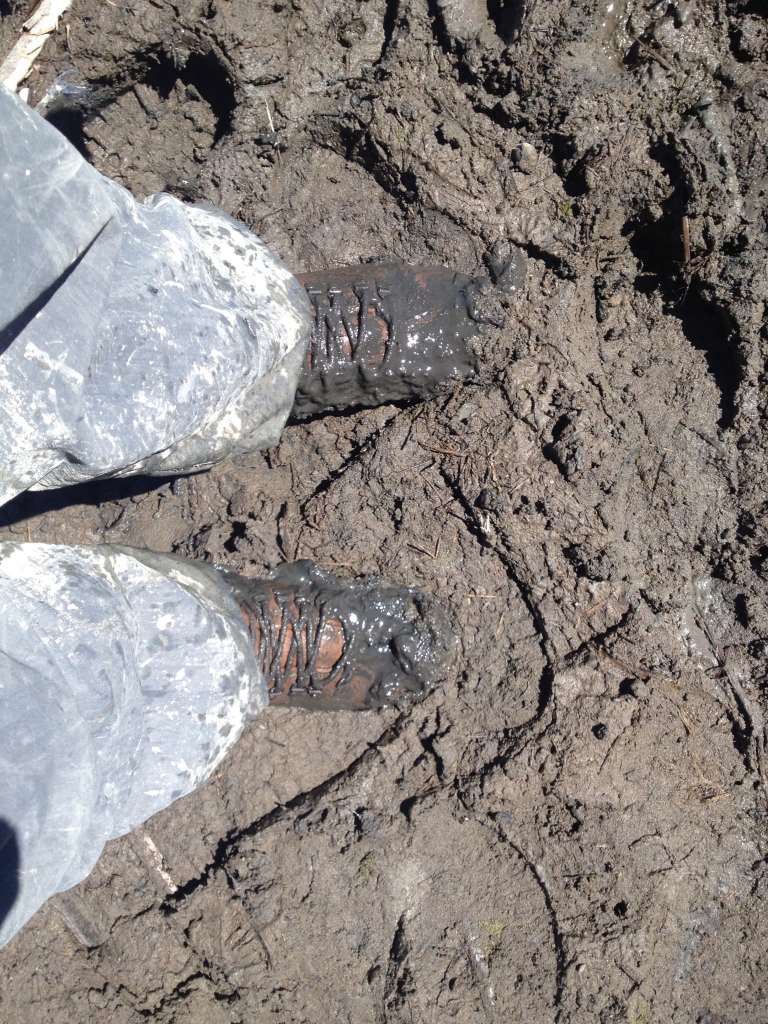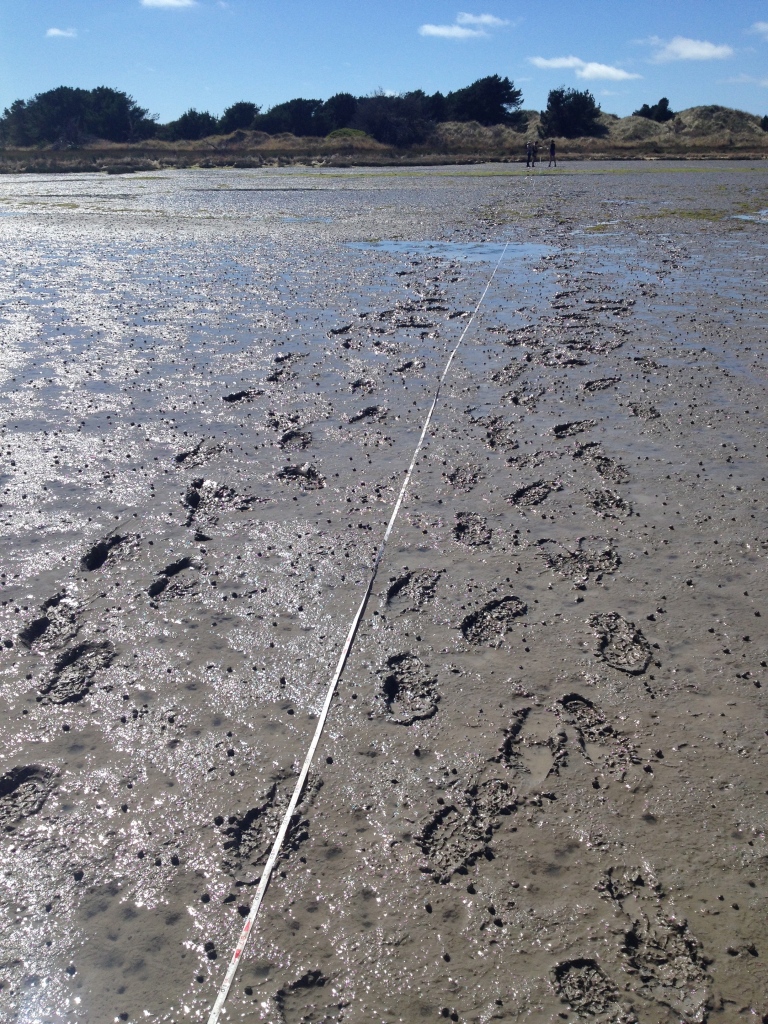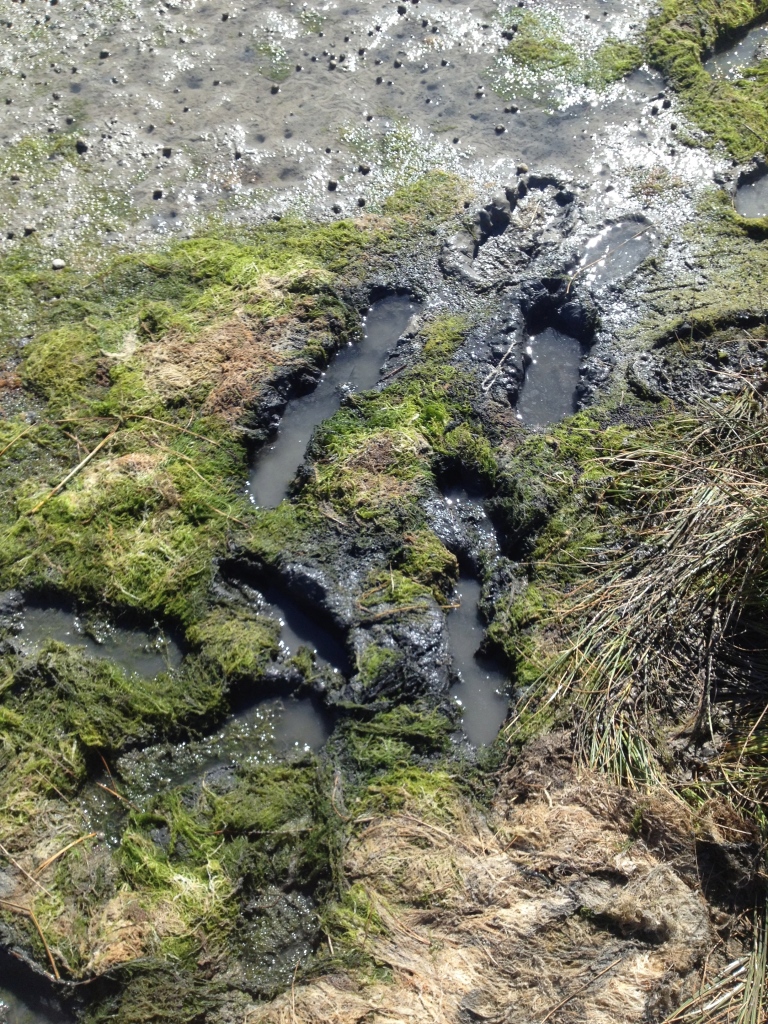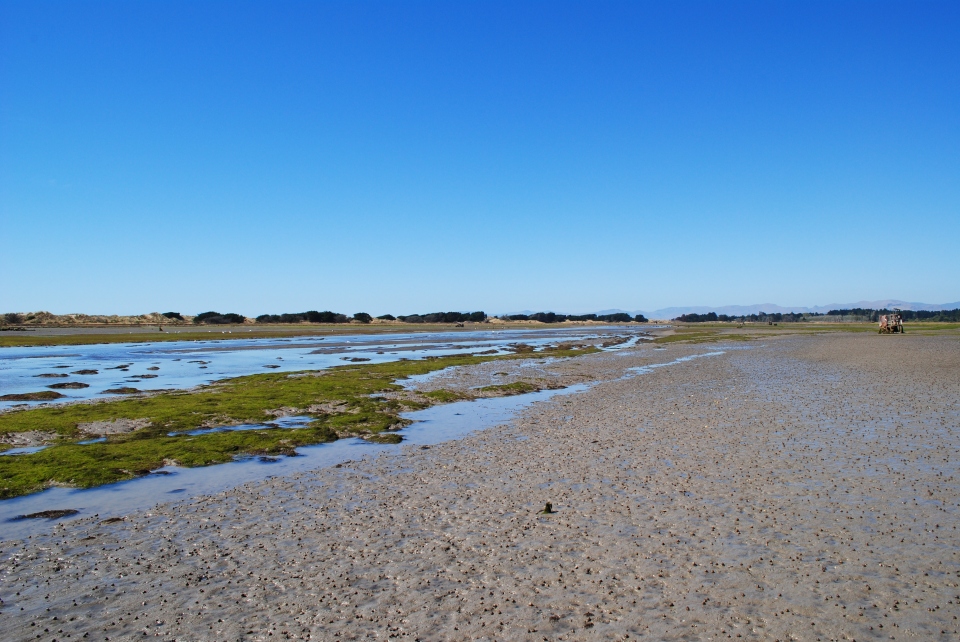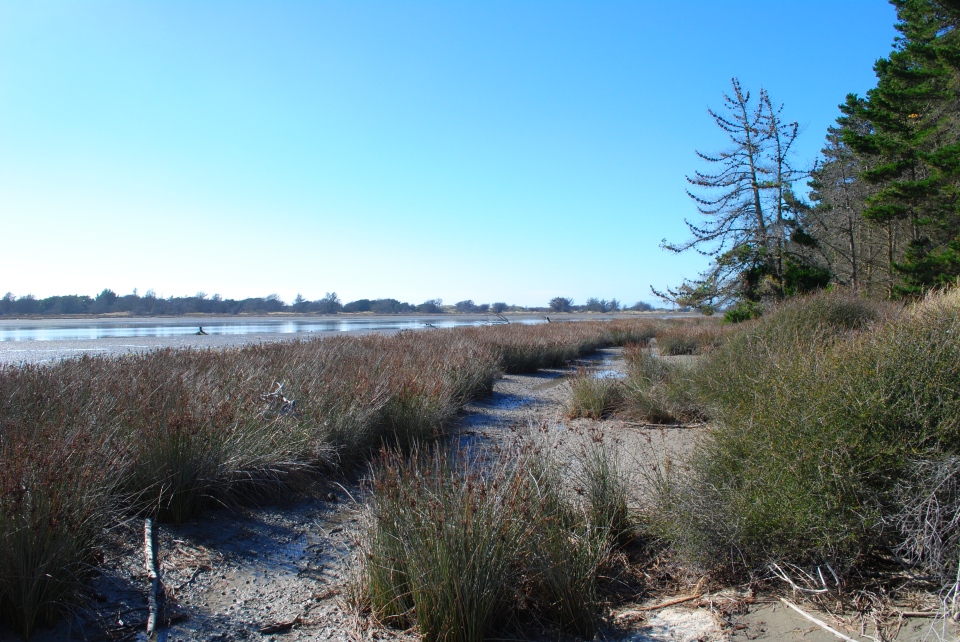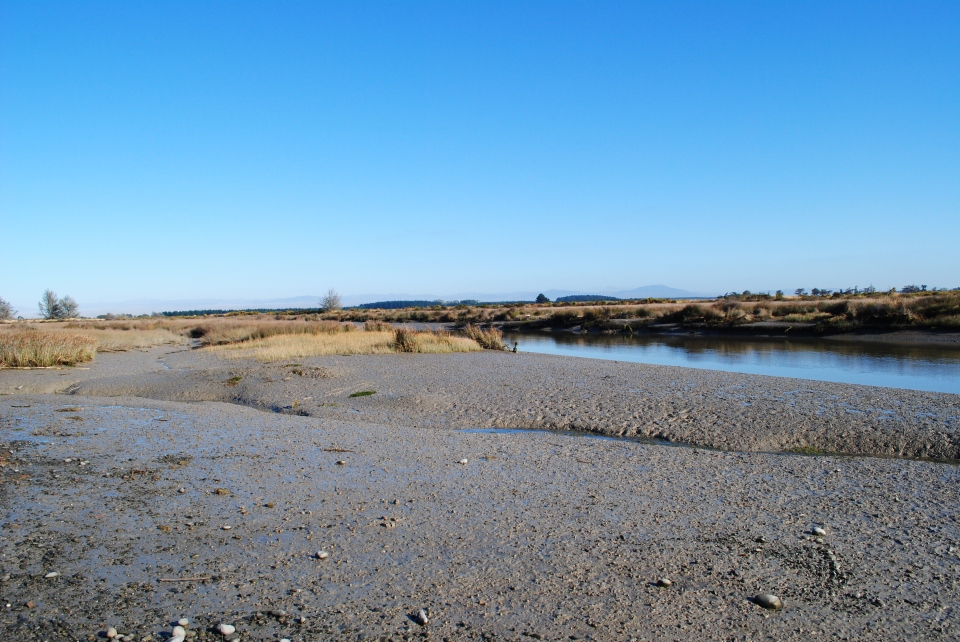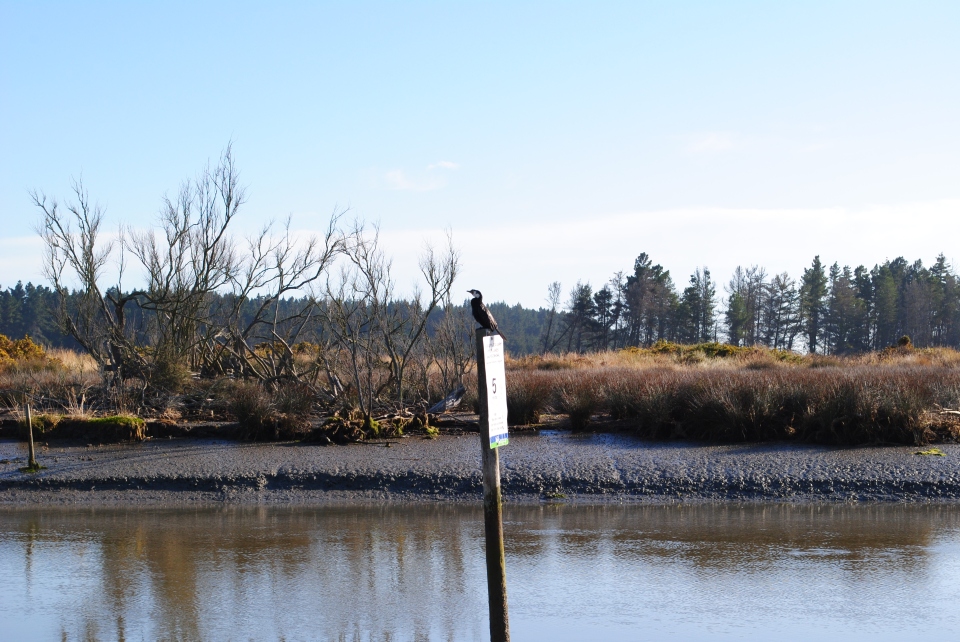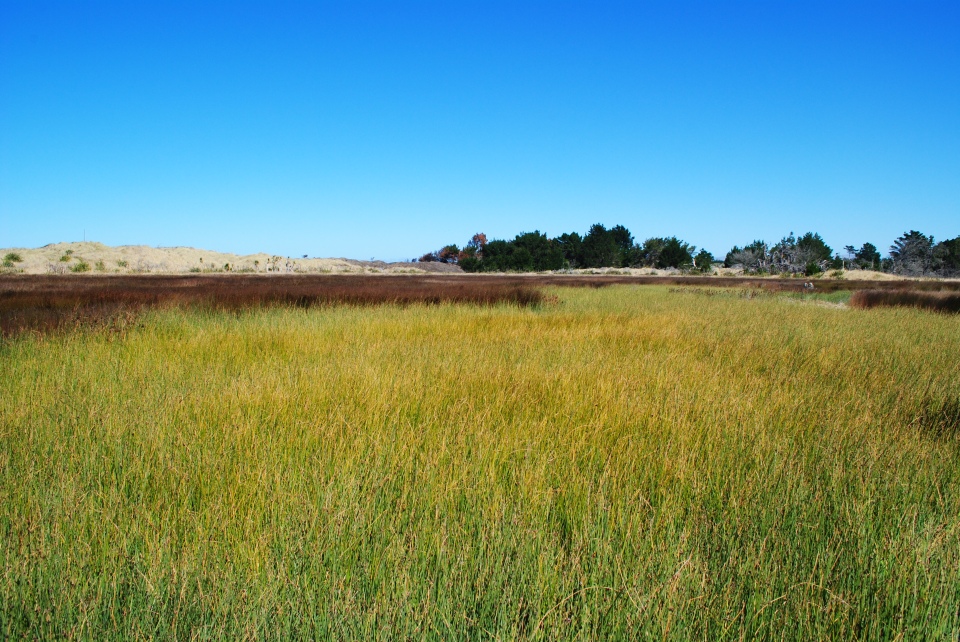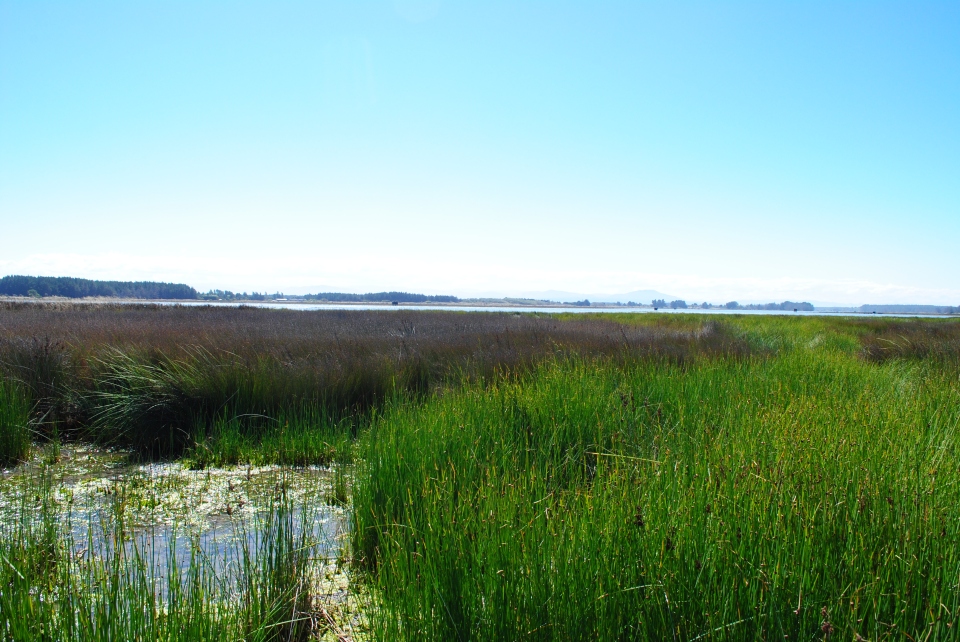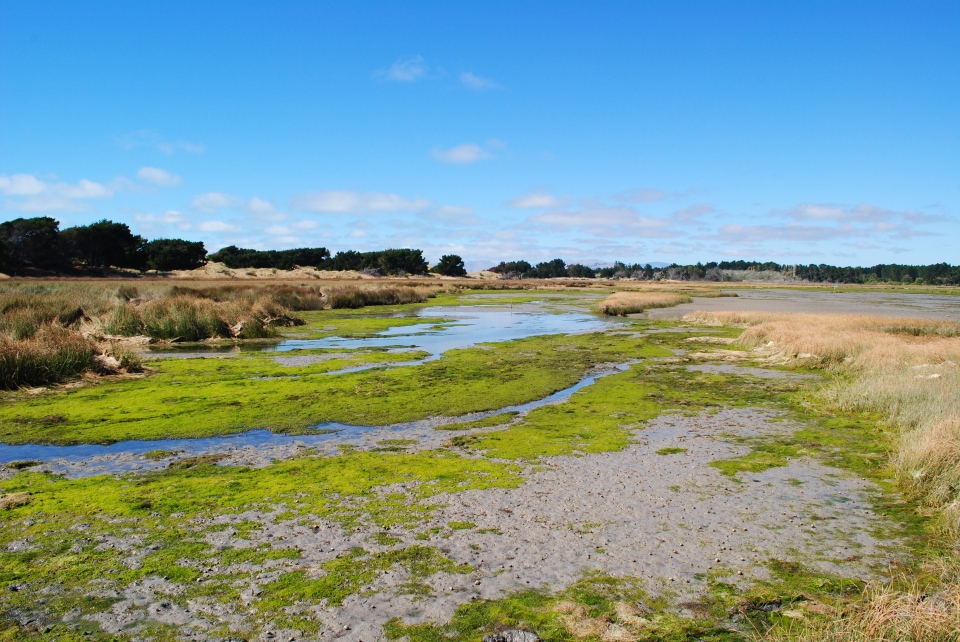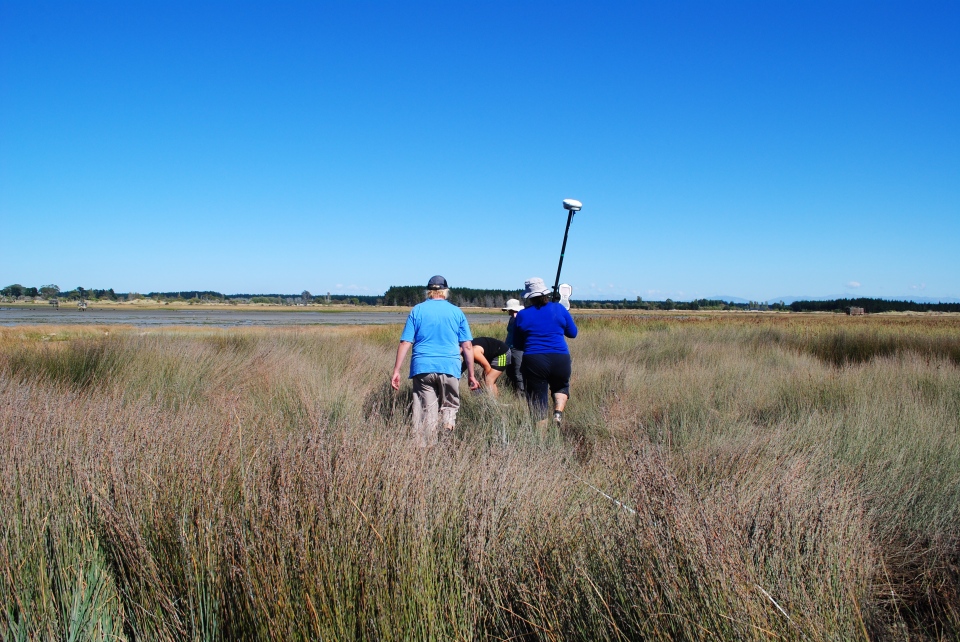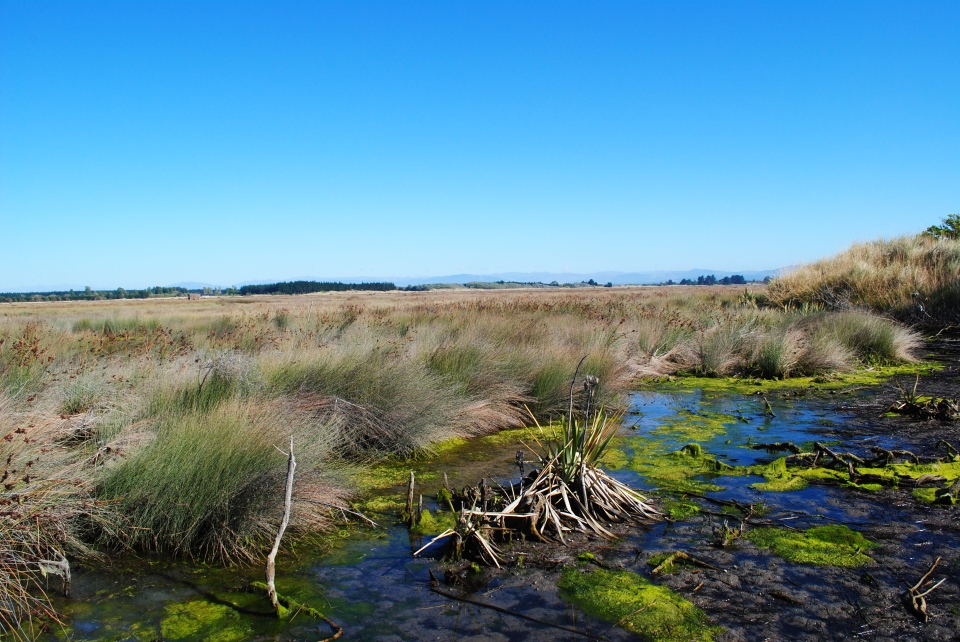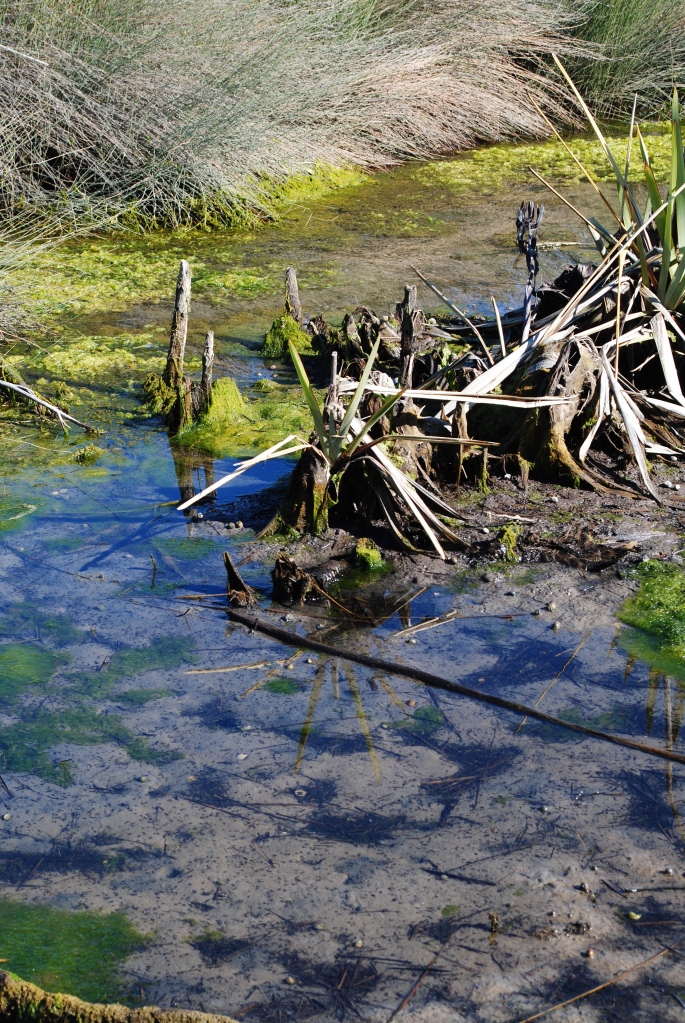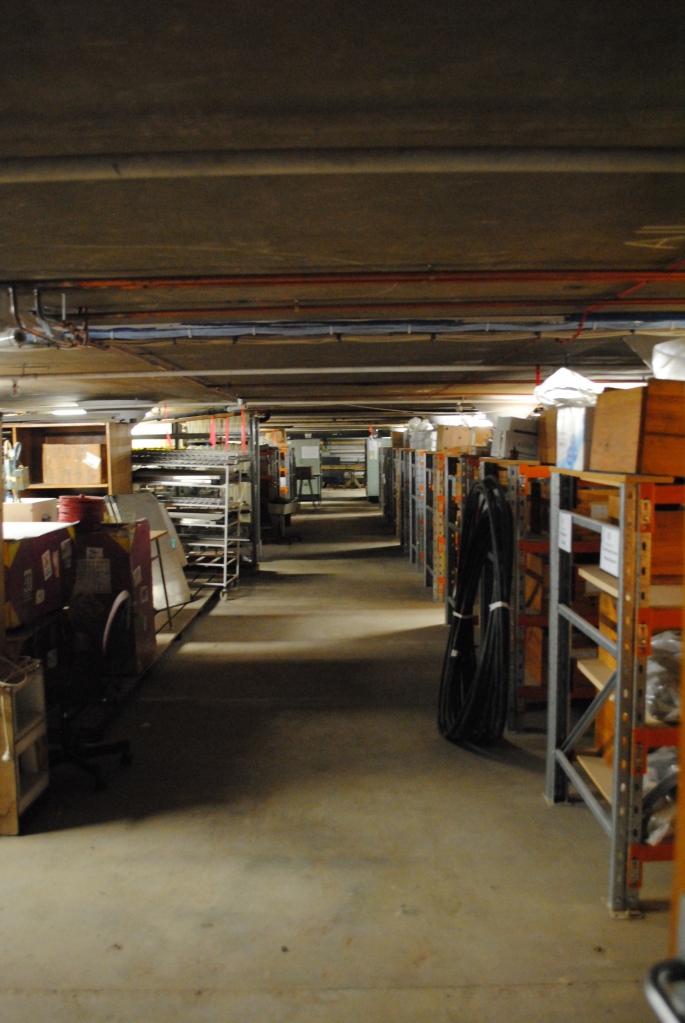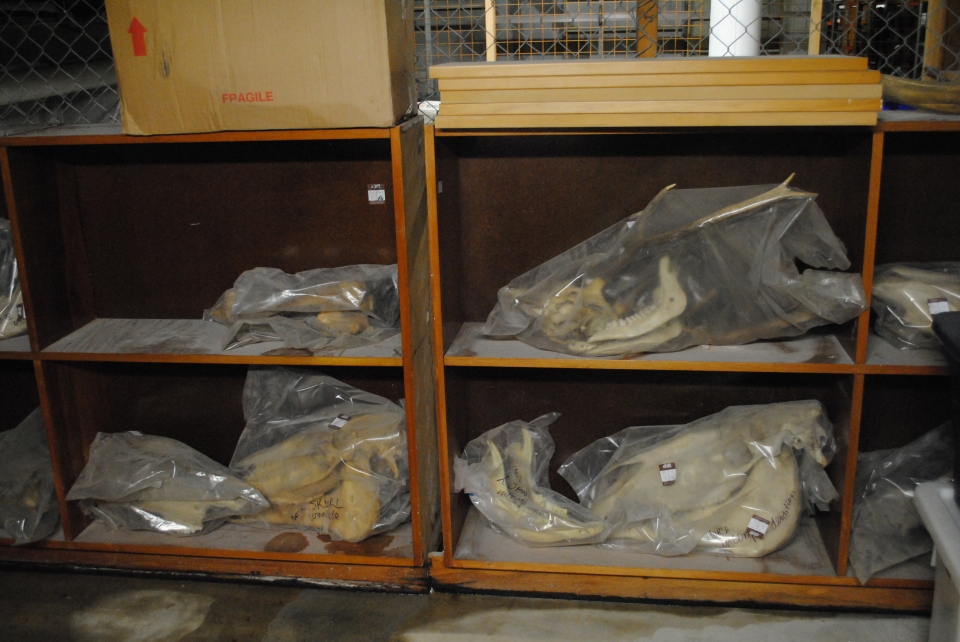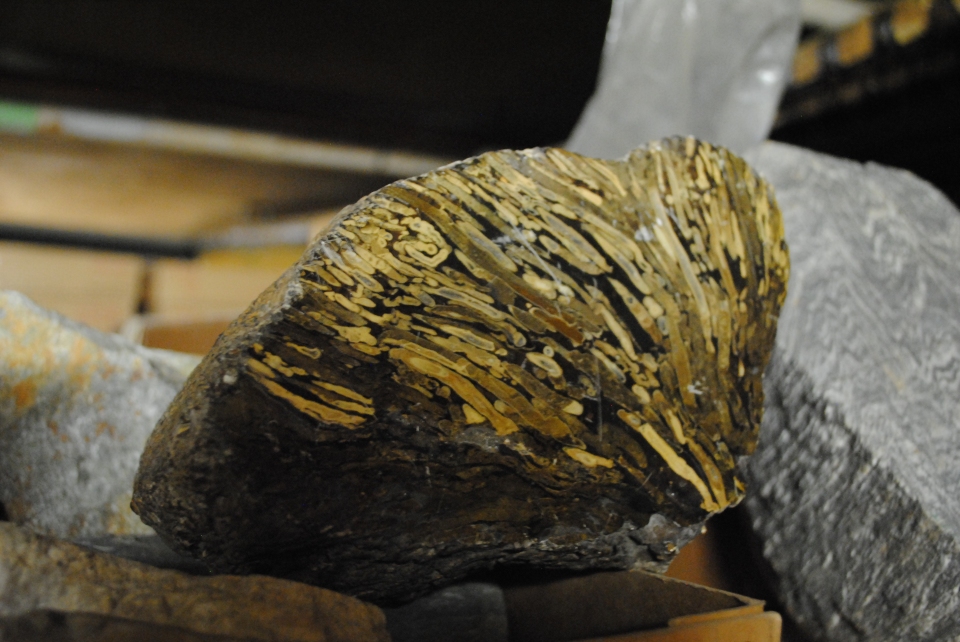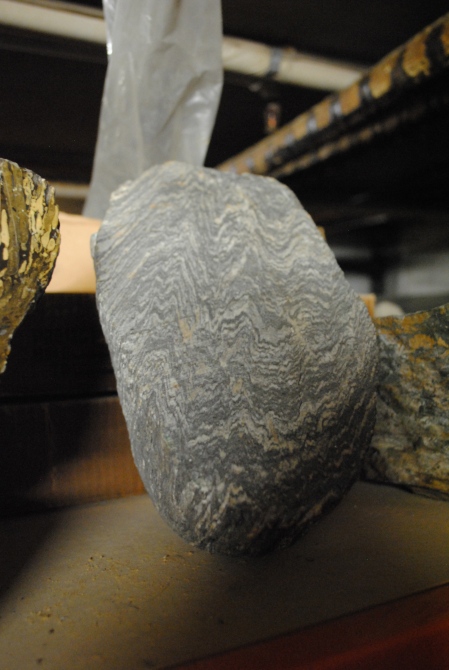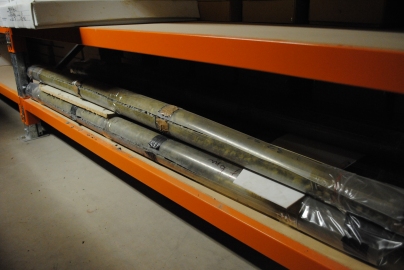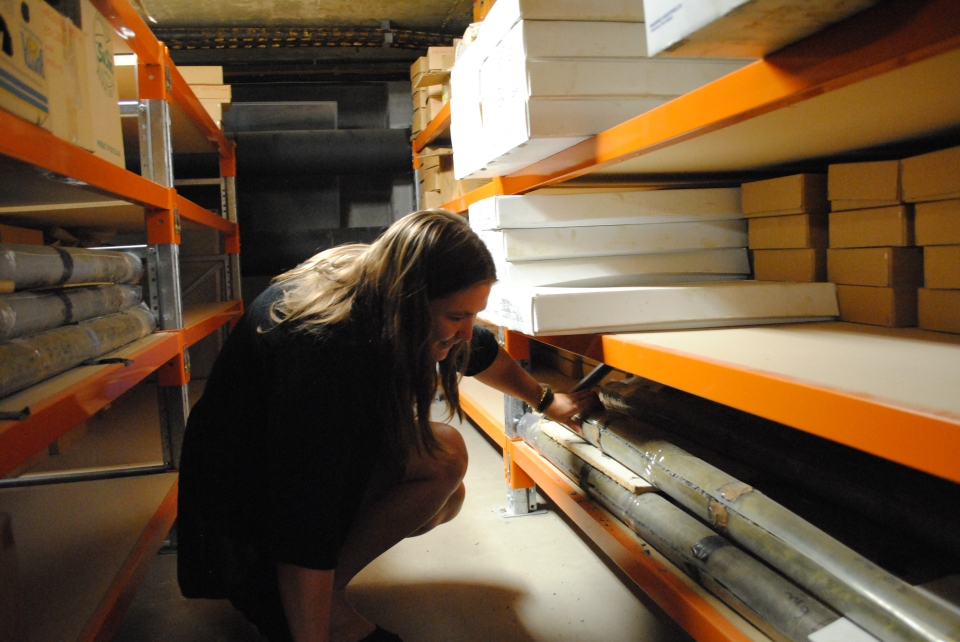Last Friday, Nicola and I went with Catherine Reid to look at some areas of the Waipara river, where Nicola’s school does a field trip. This was an opportunity for us to have a look at some of the geology of the area so that we would be able to explain it to our kids at school.
 The flat parts under the forest have been formed by the debris coming down the river at a time in the past, which has been deposited and built up the landscape. This has later been cut through by the river (when it has less debris coming down from the mountains) exposing the layers and cutting out the gorge.
The flat parts under the forest have been formed by the debris coming down the river at a time in the past, which has been deposited and built up the landscape. This has later been cut through by the river (when it has less debris coming down from the mountains) exposing the layers and cutting out the gorge.
The earliest rocks have been tilted by plate movement causing the different angles.
The angles are noticeable in this unconformity. The lower (older) rocks are tilted. On top of them the river has deposited new layers of material, and then as its sources of material have diminished it has cut back down through all the layers exposing this unconformity.
These are old sandstones again and are on an angle. In them are fossils, and some examples of concretions.
This is a concretion. It is part of the sandstone that has become much harder than the surrounding rock because of the precipitation of minerals that hold the pieces of the rock together.
Concretions are usually mostly spherical in shape and can be seen all through the river as boulders that have been washed out of the sides of the river.
These are some from in the river.
They also have trace fossils in them. These are areas where something has been before it hardened and have left marks which then hardened with the stone.
We also found fossils in the sediment walls of the gorge.
We spent too long looking at stuff in the part of the river we were in so we didn’t make it as far as we were supposed to last week, so hopefully (if the weather clears!) we will be going up to look at the rest tomorrow.


